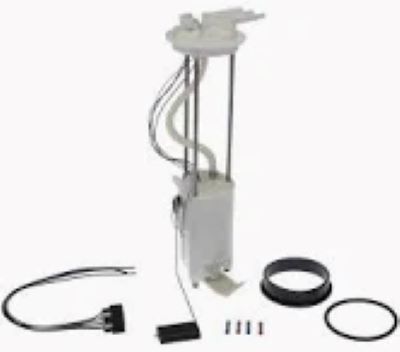The flow pattern of a fuel pump illustrates how fuel flows through the unit and in to the rest of the engine's fuel system. The flow rate is measured in liters per hour (lph) or gallons per hour (gph), and knowing these trends are important for maximizing engine performance. A performance fuel pump for instance might flow at 340 lph, which supports engines up to 700 horsepower. Flow patterns will also vary according to the type of pump, whether it is a positive displacement pump or a turbine pump and the requirements specific to the vehicle.
Regularity of flow is everything with performance applications. Reduction in the flow of fuel, even by 5-10%, can easily cause to a lean air-fuel mixture which then causes it to starve for fuel. This can lead to a loss of power and potentially engine damage. When they build fuel systems engineers are often concerned with the flow pattern from the fuel pump to provide the proper fuelling compromise between high pressure and flow rates, especially if you're looking for both performance numbers at wide open throttle mid-attack in a variable valve control equipped vehicle.
One of the more basic ideas in our industry when dealing with fuel pressure is flow rate. The flow rate increases as pressure drops As an example, a 255 lph fuel pump at 40 psi is going to flow less than the same pump at higher pressures (important when looking at boosted applications where fuel pressure also increases under boost). With the close tolerance fitment of many trigger wheel designs in relation to the crank pulley, any discrepancy in alignment or run-out with elevated cylinder pressures is a recipe for disaster as an engine developers misfire.

One motorsports example is the 24 Hours of Le Mans race where the endurance cars require fuel systems that provide stable flow rates over extended periods of use. Teams that select the wrong fuel pump for their system give up a competitive advantage or run the risk of getting knocked out of competition because they're not optimizing flow through the pertinent components. It is this real-life encounter that accurately reflects on retail and how important flow patterns are, even in high-stakes environments.
As legendary automotive engineer Ferdinand Porsche said, “he who never failed never achieved anything. This quote applies to fuel pump technology, as well; working out the flow details and improving them continues to be a constant challenge—especially among performance enthusiasts who want more capacity when they push their vehicles.
Now, you might wonder "What is the importance of fuel pump flow patterns?" Well, that has to do with the function of the fuel pump and its ability to supply fuel steadily. If the residence time isn’t long enough, then insufficient flow pattern sends fuel injectors insufficient gasoline and the engine hesitates or stalls under load. The engine's ability to supply the maximum possible power levels largely depends on how efficiently each component can regulate fuel delivery, and vehicles tweaked for high performance such as those with forced induction or larger fuel injectors need an optimized fuel flow pattern.
Flow patterns are another common variable that also affect the efficiency of your fuel pump. The same flow rate may require more power from a pump with lower efficiency, affect the overall performance and fuel consumption of the vehicle. For instance, brands such as Walbro and Aeromotive produce high-efficiency pumps that are designed to provide a steady flow while drawing minimal power, and the result is equally boosted performance and fuel economy.
If you want to know more about how fuel pump flow patterns can affect engine performance, Fuel Pump has all the details and solutions for improving your fuel system!